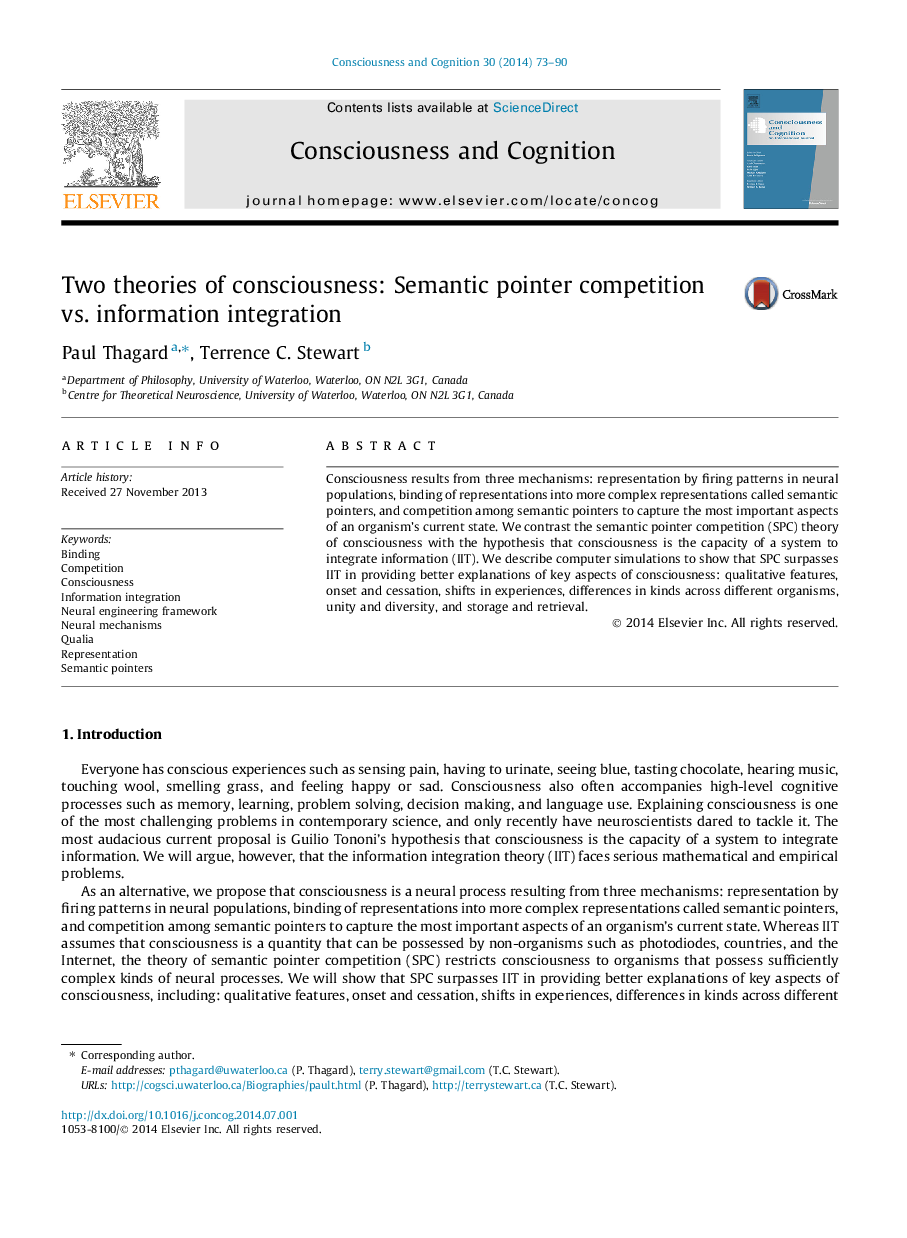| Article ID | Journal | Published Year | Pages | File Type |
|---|---|---|---|---|
| 7289714 | Consciousness and Cognition | 2014 | 18 Pages |
Abstract
Consciousness results from three mechanisms: representation by firing patterns in neural populations, binding of representations into more complex representations called semantic pointers, and competition among semantic pointers to capture the most important aspects of an organism's current state. We contrast the semantic pointer competition (SPC) theory of consciousness with the hypothesis that consciousness is the capacity of a system to integrate information (IIT). We describe computer simulations to show that SPC surpasses IIT in providing better explanations of key aspects of consciousness: qualitative features, onset and cessation, shifts in experiences, differences in kinds across different organisms, unity and diversity, and storage and retrieval.
Keywords
Related Topics
Life Sciences
Neuroscience
Cognitive Neuroscience
Authors
Paul Thagard, Terrence C. Stewart,
